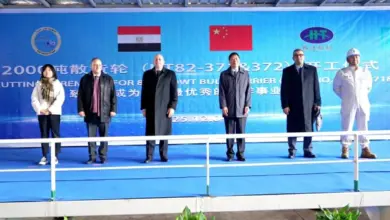
Days after taking over as China’s leader in 2012, Xi Jinping led other top Communist Party officials to Beijing’s National Museum to visit an exhibit on party history entitled “The Road to Rejuvenation”. The museum trip telegraphed what would become one of Xi’s overarching policy priorities in the next five years.
On Tuesday, less than a week after being anointed for a second term as party chief at a twice-a-decade party congress, Xi and the other men at the pinnacle of the party made a rare joint visit to China’s financial capital, Shanghai, where they paid homage to the party’s birthplace and founding fathers.
Official photos showed the men at the site of the first party congress in 1921, gazing solemnly at a relief sculpture of the party’s original leaders and standing around a wooden meeting table.
“This is an important symbolic gesture,” said Willy Wo-Lap Lam, an adjunct professor at the Chinese University of Hong Kong.
“It’s a reinstatement of the commitment of the party in this so-called ‘new era of socialism with Chinese characteristics’ that they would stick to original values of the founding fathers. That means definitely no move away from orthodox Marxism, orthodox Maoism. No taking up of Western values.”
The visit brought parts of the city of 25 million people to a standstill as police blocked roads and highways around the Xintiandi area, home to the modest grey brick building that hosted the first congress.
SHANGHAI FACTION
At the congress that ended last week – the party’s 19th – Xi consolidated his grip as China’s strongest leader in decades, promoting allies and getting his name and signature political platform enshrined in the party charter.
Xi is not the first general secretary of the party to try to send a message with a well-publicised trip early in his tenure.
Hu Jintao, his predecessor, sought to cultivate a “man of the people” image starting with a visit one month after becoming party chief in 2002 to the town of Xibaipo, a one-time revolutionary base.
In December 2012, a month after Xi became party chief, he made a low-key but widely watched trip to Shenzhen, the southern city was where late paramount leader Deng Xiaoping jumpstarted economic reforms in the early 1990s.
The visit to Shanghai on Tuesday may also send another message, Lam said. The city had been synonymous with the political patronage network of 91-year-old former president Jiang Zemin, who attended the congress.
At the weekend, Xi promoted ally Li Qiang to the role of Shanghai party chief, the city’s top job. Li is not from the city, nor has he built his career there.
In January another Xi man from elsewhere, Ying Yong, was appointed mayor. Traditionally, the city’s party chief or mayor, or both, have hailed from Shanghai or worked up the ranks there. Having two outsiders is a break with the past.
“It shows indirectly that the Shanghai faction under Jiang Zemin has ceased to be a force to be reckoned with,” Lam said.
“Now, it’s Xi Jinping bringing his own people.”




